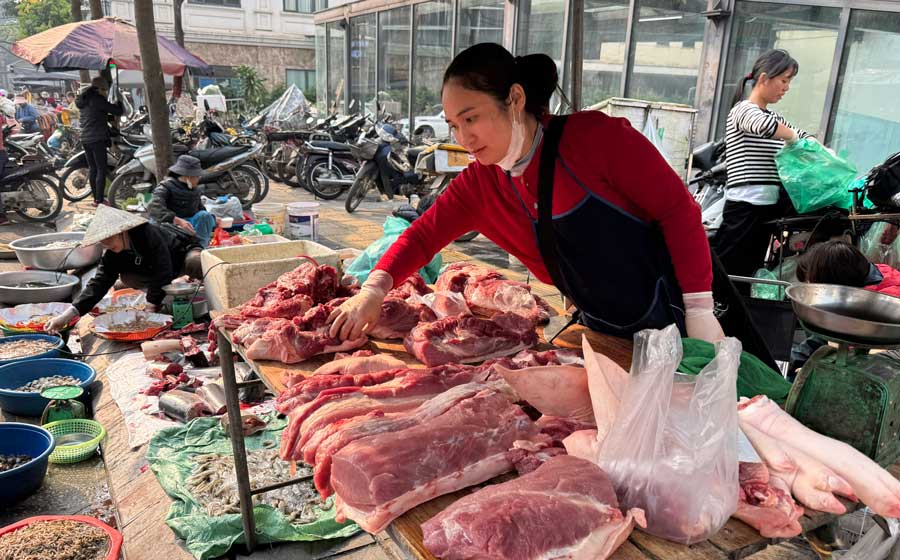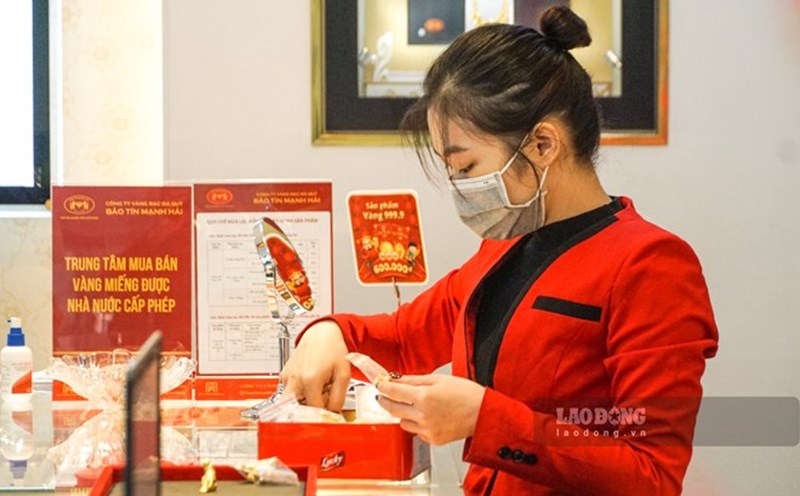According to the Department of Animal Husbandry and Veterinary Medicine (Ministry of Agriculture and Environment), in September 2025, the price of live pigs exported from the cage continued to decrease, however, compared to previous months, the decrease rate has gradually decreased. Today, October 15, the price of live pigs fluctuates between 50,000 - 54,000 VND/kg. Of which, only Hanoi, Hai Phong, Dong Nai, Tay Ninh, Ho Chi Minh City have live pig prices at 54,000 VND/kg. The remaining localities are mainly at 52,000 - 53,000 VND/kg. This is a very low price compared to the beginning of 2025.
In particular, many localities have continuously recorded price decreases in recent days. Today, October 15, Dak Lak is the locality with the lowest price of live pigs at VND 1,000/kg, down to VND 50,000/kg - the lowest price in the country.
In general, the price of live pigs in the three regions fluctuates quite uniformly, without a large difference between regions. However, due to different supply capabilities, there is a difference between provinces of about 1,000 - 2,000 VND/kg of fresh meat. Out-of- poultry prices tend to decrease due to the impact of African swine fever spreading to most provinces and cities across the country, causing people to be hesitant to consume.

The Department of Animal Husbandry and Veterinary Medicine believes that in the coming time, the price of live pigs will stabilize again and fluctuate around 56,000-60,000: "In the coming time, the price of live pigs may stabilize again and fluctuate around 56,000-60,000 VND/kg, due to the increased consumer demand during the recent National Day and the situation of epidemics being controlled, livestock farmers will re-herd, increase flocks to stabilize supply, market and ensure consumption".
Recently, the situation of African swine fever has increased and focused on July-August 2025, mainly occurring in small, small-scale households that do not ensure biosafety livestock farming conditions. The reason is said to be that the total large herd of livestock but small-scale livestock farming still accounts for a high proportion, not ensuring biosafety measures in livestock farming.
Control of the trade, transportation, and slaughter of pigs of unknown origin and origin is not strict; as well as the situation of not reporting according to regulations still occurs in some localities, businesses, and livestock farmers. In addition, in some localities, disease prevention is facing difficulties due to lack of vaccines, animal quarantine human resources and resources to thoroughly handle the epidemic.
"In the coming time, if authorities at all levels, authorities, businesses, and livestock farmers do not strictly implement disease prevention and control measures, the risk of African swine fever epidemic continuing to arise and spread in the pigs is high," emphasized the representative of the Department of Animal Husbandry and Veterinary Medicine.
In the coming time, the Department of Animal Husbandry and Veterinary Medicine will continue to establish working groups to inspect, urge, and guide measures to prevent and control animal diseases on land; implement national programs and plans for preventing and fighting animal diseases on land and build areas and facilities for animal disease safety on land and state management of animal husbandry and veterinary medicine according to the model of local government at 2 levels.









